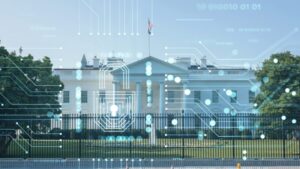Though it may be one of the newest states, Alaska’s Department of Education is taking a leadership role in artificial intelligence with new guidance for K-12 schools on how students and educators can use the technology safely and responsibly.
The integration of artificial intelligence into classrooms and the economy is getting a $4 billion boost in cash and technology services commitments from tech giant Microsoft which has unveiled two new initiatives to accelerate the “AI race.”
A new executive order from President Donald Trump is directing the integration of artificial intelligence into K-12 schools in an aim to equip the future U.S. workforce with skills needed to further the technology’s innovation capabilities.
The overwhelming majority of states – 73 percent – will struggle to maintain K-12 digital access as key Federal programs supporting those efforts come to a close, according to a new report from the State Educational Technology Directors Association (SETDA).
The Cybersecurity and Infrastructure Security Agency (CISA) has announced $6.8 million in funding for the nonprofit CYBER.ORG to carry out its K-12 cyber education mission.
In order to create a more robust cybersecurity workforce, security experts explained on Wednesday that cybersecurity education needs to start at the K-12 level.
CYBER.ORG, an organization funded by the Cybersecurity and Infrastructure Security Agency (CISA), has declared June as National Cybersecurity Education Month to raise awareness of K-12 cybersecurity education.
As the health care and education sectors have become prime targets for cyberattacks, experts from those sectors expressed their needs on May 18 for more funding and Federal collaboration to better protect the cyber posture of schools and hospitals.
With at least a half-million cybersecurity positions unfilled in the United States, Federal experts and educators said closing the gap on the shortage of cybersecurity professionals begins with cyber education efforts, particularly at the K-12 level.









